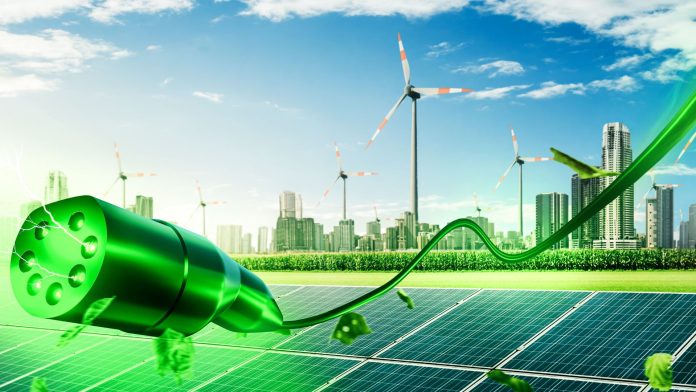RESC analyzes the trends of the Croatian electricity system every month, closely monitoring electricity consumption and production, with a particular focus on renewable energy sources. Renewable energy plays an exceptionally important role in achieving energy independence in Croatia and Europe and is crucial in the fight against climate change. The monthly reports consolidate data on consumption, production, renewable energy development, cross-border exchanges, and any changes in these aspects. Analyses of the Croatian electricity system’s trends can serve as valuable indicators for decision-makers in Croatia for future planning.
Last month, we reported that in the first five months of the year, approximately 75.9% of electric energy in Croatia had been decarbonized. Recently released data from the European Network of Transmission System Operators for Electricity (ENTSO-E) shows that Croatia ranked fourth in terms of the share of renewable energy sources in electricity production in 2021.
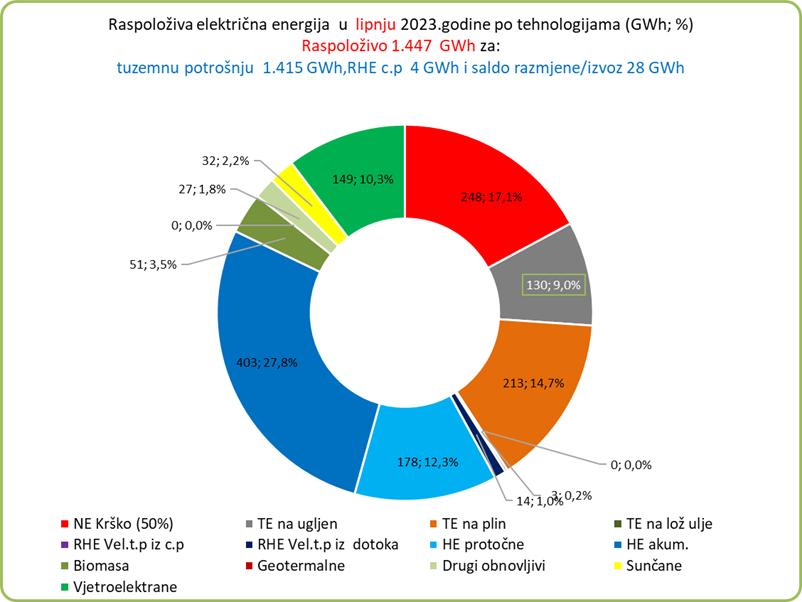
The latest data from HEP ODS d.o.o. shows that in Croatia, the number of installed solar capacities is steadily increasing month by month and reached 305.8 MW on June 1st. According to data on available electric energy for June, solar power plants accounted for a share of 2.2% in the production mix, whereas recently, this share was less than 1%. Wind power plants had slightly lower results in June, producing 142 GWh of electric energy, achieving a 10.3% share in the production mix, compared to the 14% achieved in May.
It is evident that daily consumption and peak load during the month of June were highly variable due to weather conditions. There was exceptionally high hydroelectric production, particularly from run-of-river hydroelectric plants fed by water inflow. The Plomin thermal power plant operated at full capacity in June following its annual overhaul. Gas-fired power plants also operated with increased production. Due to the high production from hydro, wind, and solar power plants, electricity had to be exported for most of the month. Consequently, in June, there was an electricity export of 28 GWh due to higher production compared to consumption.
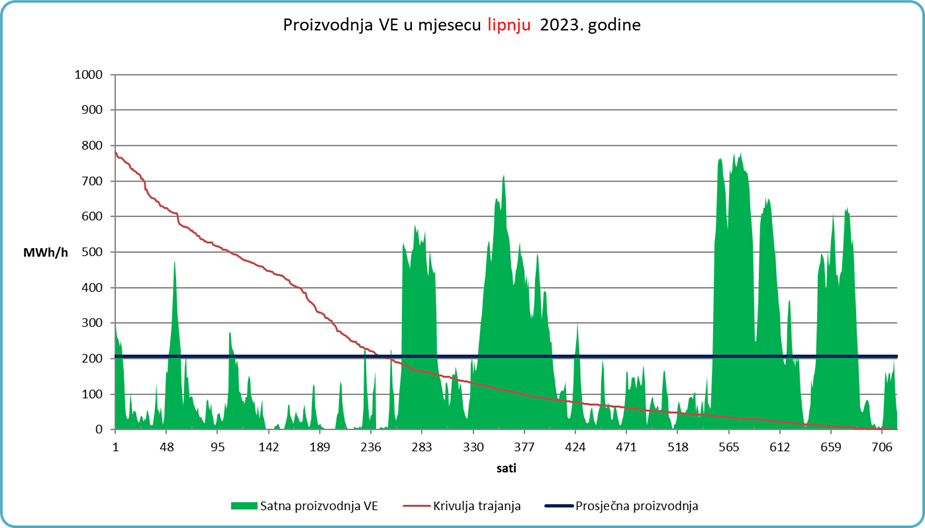
The total production of wind power plants in June amounted to 149 GWh, with a capacity factor of 21.1%, slightly above the average. The capacity factor for the first six months of this year was 30.5%, which is 1.8% better than the multi-year average. The average production of wind power plants in June was 207.2 MWh/h, while the maximum production reached 782 MWh per hour, with a maximum capacity factor of 79.8%.
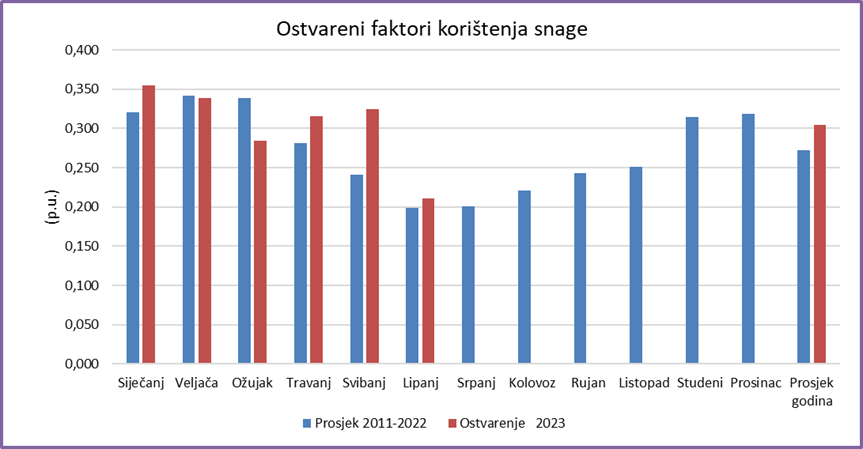
Croatia exported 1,224 GWh of electric energy in the first six months.
The total electricity turnover in Croatia’s power system for the first six months of this year amounted to 13,091 GWh. Out of this, available energy or demand was 10,178 GWh, accounting for 77.8% of the turnover, while transit amounted to 2,913 GWh, representing 22.2% of the turnover.
It is evident that the total electricity production at power plants was 8,667 GWh, with non-renewable sources contributing 2,438 GWh or 28.1%, and renewable sources contributing 6,229 GWh or 71.9%.
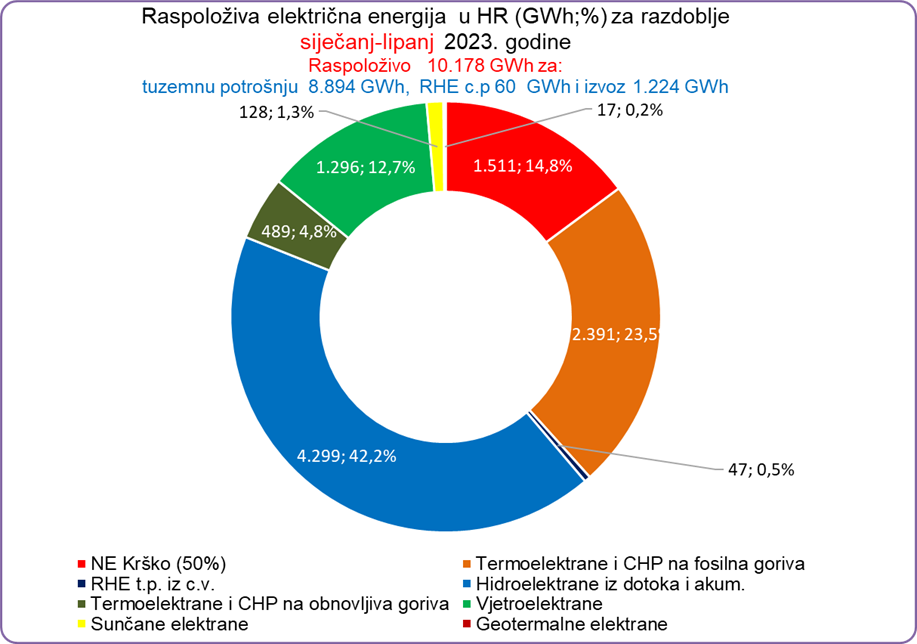
The total electricity consumption amounted to 8,954 GWh, with domestic consumption being 8,894 GWh, and consumption for hydroelectric power plants’ water pumping at 60 GWh. The Krško Nuclear Power Plant (50%) produced 1,511 GWh during the observed period. Since the available energy exceeded the consumption by 1,224 GWh, these surpluses were exported to foreign markets.
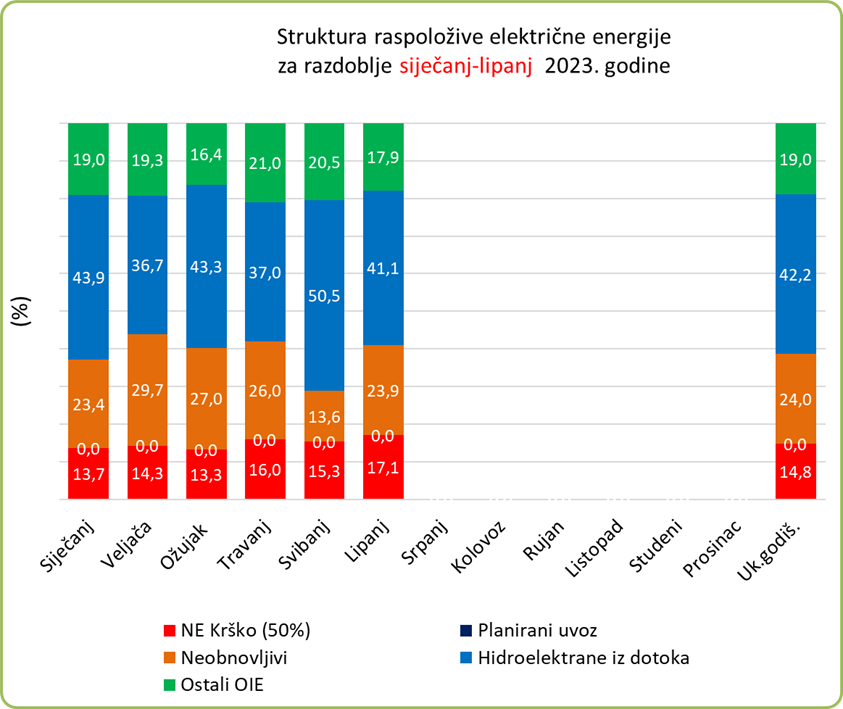
Hydroelectric power plants continue to lead in electricity production in Croatia, but behind them in terms of production quantity are fossil fuel power plants. New renewable energy sources (solar, wind, geothermal, biogas, biomass, and cogeneration) are in third place with a 19% share in the first six months of this year. It is expected that by the end of the year, they will surpass a 20% share of available energy.
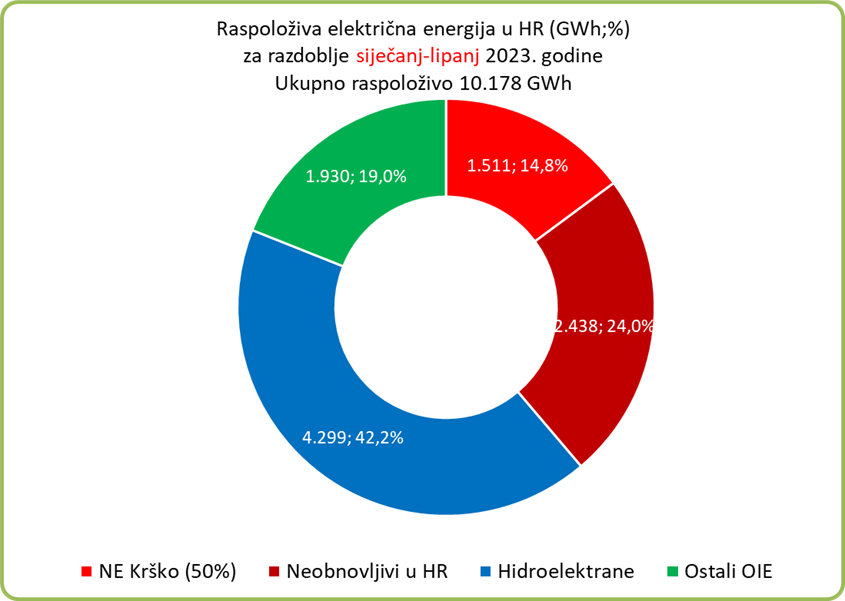
In the first half of this year, all renewable energy sources collectively contributed to electricity production with a share of 61.2%.
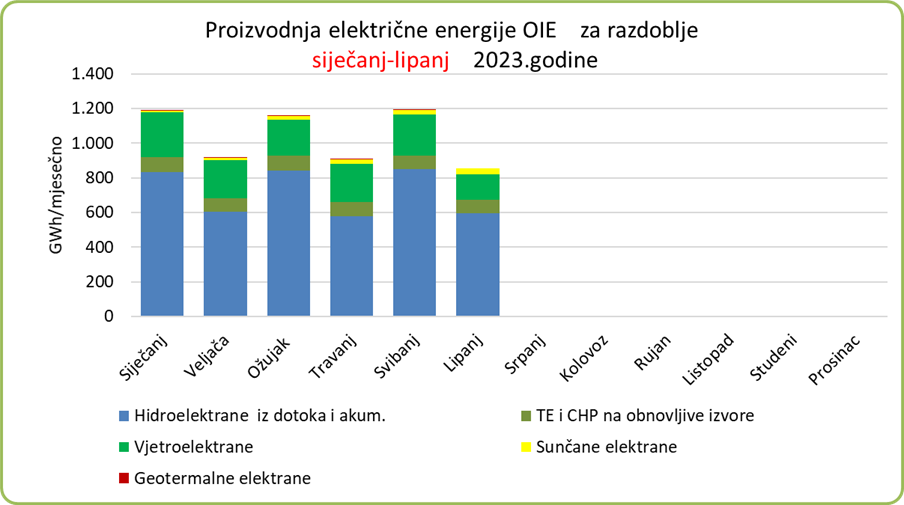
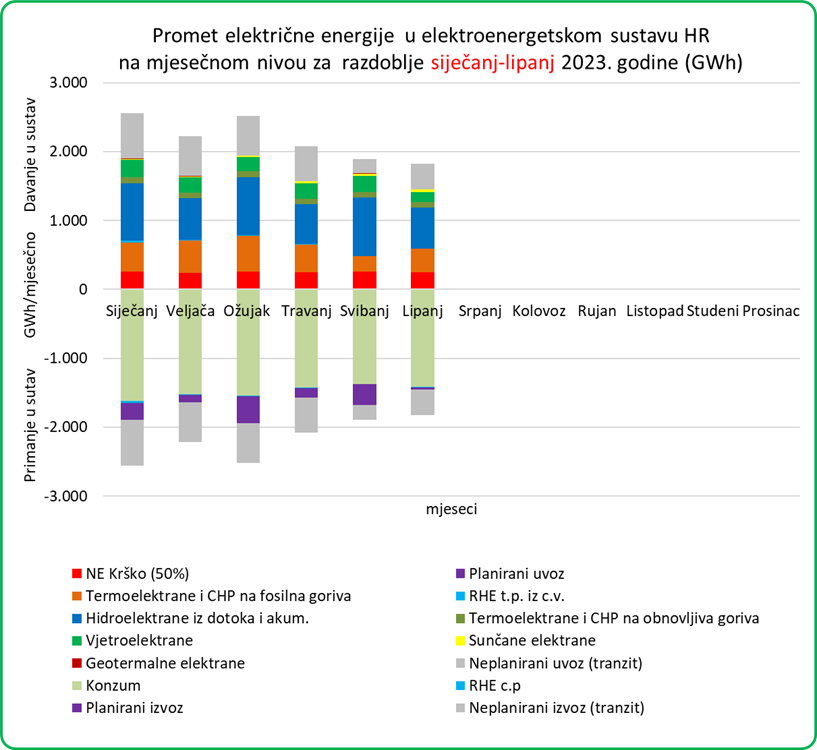
Production of electric energy from Renewable Energy Sources (OIE) in the first six months of 2023
The total production from renewable energy sources in the first six months amounted to 6,229 GWh, and there was an accumulation of 209 GWh compared to the beginning of the year.
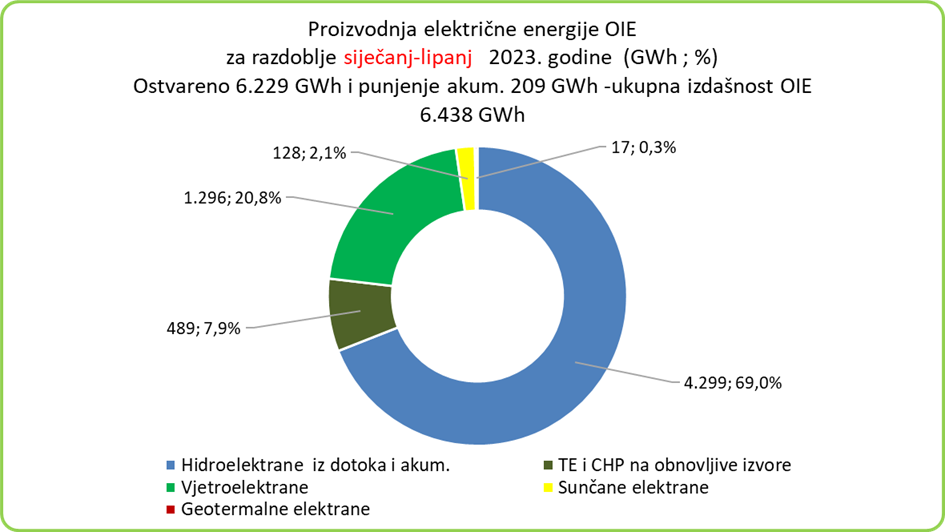
This year, with average capacity factors, it is expected that the production of Renewable Energy Sources (OIE) will exceed 11 TWh (approximately 27 TWh of primary energy).
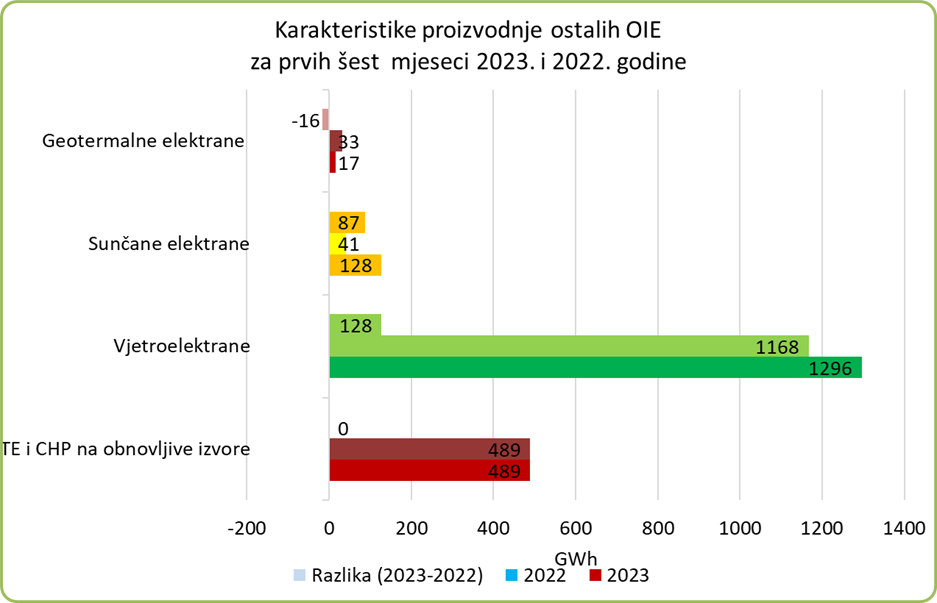
In the first six months of this year, there has been a noticeable increase in the capacity of solar power plants, resulting in increased electricity production from solar energy. Due to favorable winds in the first half of the year, our wind power plants have achieved excellent results, while a decrease in production was recorded at the geothermal power plant.
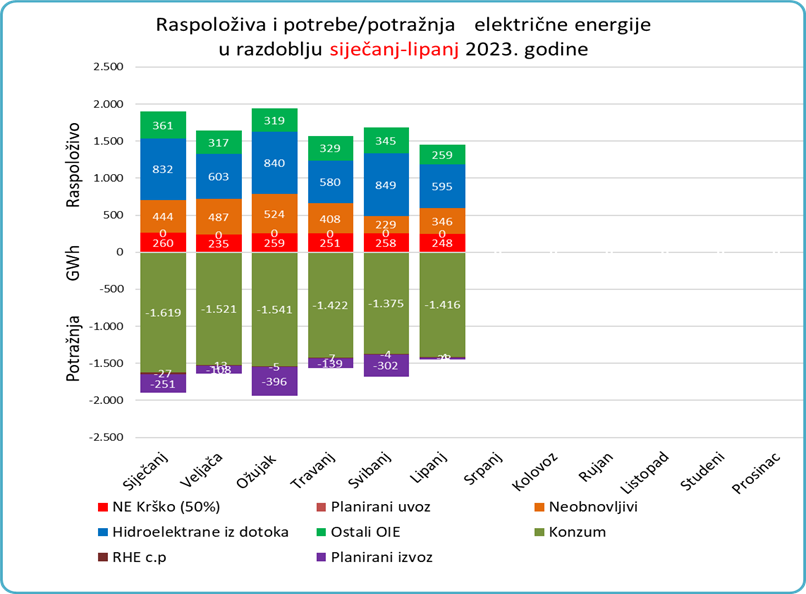
In the first six months of this year, compared to the same period last year, there have been very favorable energy indicators, which will have a positive impact on the performance of energy companies, primarily HEP. The Krško Nuclear Power Plant, with its Croatian share of 50%, produced 25 GWh more than in the same period last year.
The production from renewable energy sources in the first six months of this year is higher by 1,746 GWh compared to the same period last year, mainly thanks to increased hydroelectric production from water inflow and reservoirs. Similarly, wind power plants produced 128 GWh more electricity during the observed period. Solar power plants also had higher production by 87 GWh in the first six months of this year compared to the same period last year. Other renewable energy sources (biomass, biogas, geothermal) had 16 GWh less production during the observed period.
In the span of a year, we have transitioned from being importers of electric energy to becoming exporters.
It’s important to note that in the first six months of this year, we achieved a significant export of electric energy amounting to 1,224 GWh, whereas in the same period last year, we had to import 908 GWh of electric energy. This difference of 2,132 GWh is an excellent economic indicator, especially when considering the differences in market prices during the observed periods. The average price on the market in the first six months of this year was €115.49/MWh, while in the same period last year, it was €222.68/MWh, demonstrating that the economic exchange this year is more favorable compared to the same period last year by almost €343 million.
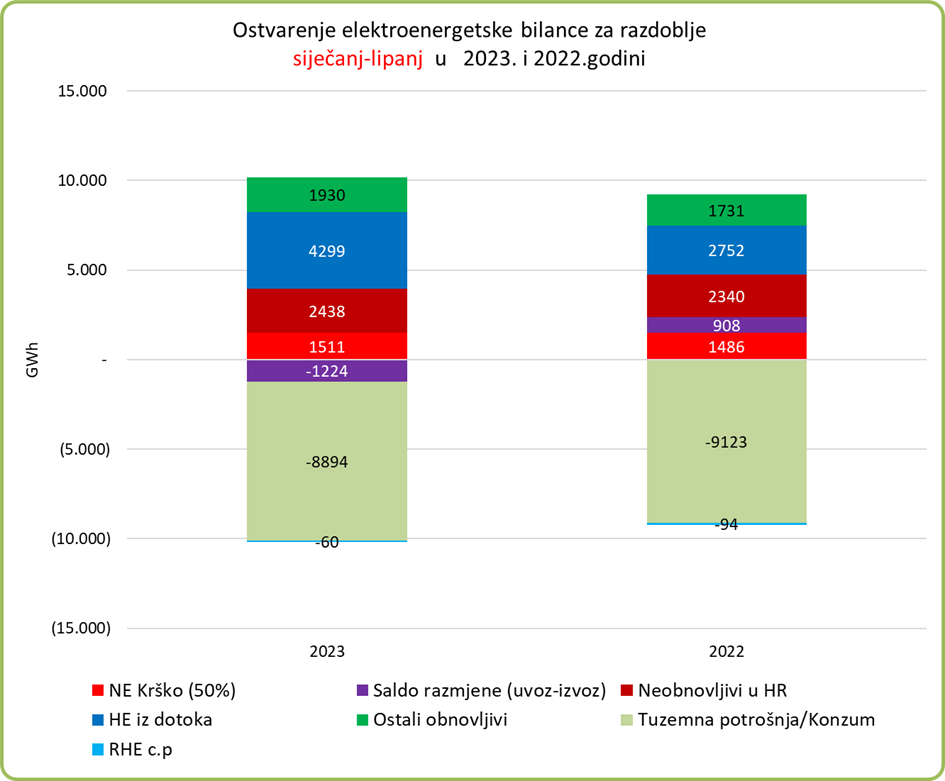
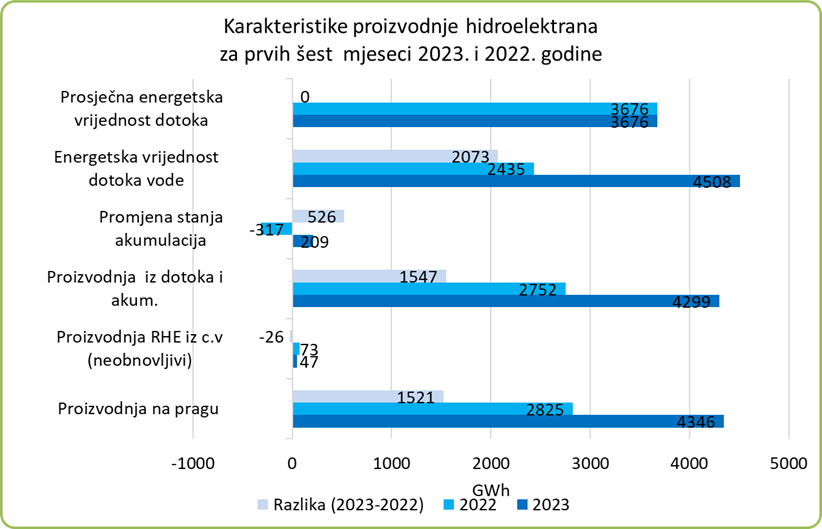
The total production at the threshold of hydroelectric power plants for the first six months of this year was 4,346 GWh, with 47 GWh coming from pumped storage hydroelectric plants (non-renewable part). The energy value of water inflow for hydroelectric power plants for the first six months of this year is higher by 2,073 GWh compared to the same period last year.
Due to very high groundwater levels in hydroenergy systems, current water inflows to hydroelectric power plants, and the large reservoir capacity, we expect favorable energy trends during the summer months from July to September. This primarily means the security of supply for consumers and the stability of the power system operation, regardless of the increased consumption typical during the tourist season, and the possible need for electricity imports.
Price Movements in June
The average hourly price in June this year was €95.02/MWh, while in June last year, it was €245.82/MWh, representing a decrease of €150.80/MWh or 61.35%.
The average hourly price for the first six months of this year was €115.49/MWh, compared to €222.68/MWh in the same period last year, indicating a reduction of €107.19/MWh or 48.14%.
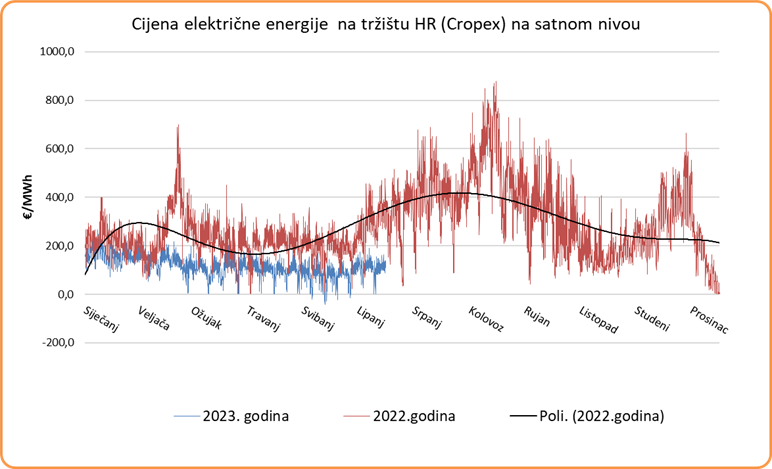
The average price of gas in the first six months of 2022 was €100.24/MWh, while in the same period this year, it was €44.06/MWh, representing a decrease of €56.18/MWh or 56.04%.
However, this winter, energy prices could rise and force governments to resort to subsidies again, warned Fatih Birol, the head of the International Energy Agency (IEA). He added that the key factors would include the Chinese economy and winter temperature conditions. If the Chinese economy strengthens rapidly, and if the winter is severe, gas prices could increase, putting pressure on consumers, Fatih Birol said. Governments should insist on energy conservation and encourage increased use of renewable sources, he emphasized.
The report used publicly available data from HEP, HOPS, HROTE, CROPEX, NE Krško, ENTSO, DZS, RTE France, RED Electrica, World Data, IEA, EEX, EPEX, and IRENA.


